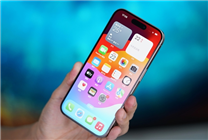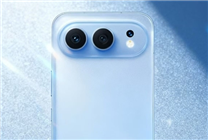Is Limiting iPhone Charging to 80% Worth It? Insights from Real-World Testing
Summary
- Real-world testing reveals that limiting iPhone charging to 80% may not be worthwhile, as it leads to increased battery anxiety and reduced overall life span.
- After 18 months of adhering to this guideline, users report significant deterioration in battery performance and daily usability.
- The findings suggest that the inconveniences of the 80% charging limit outweigh any modest battery preservation benefits.
Recent insights into the charging practices for Apple’s latest iPhone models, specifically the iPhone 15 Pro Max, have sparked debate among tech enthusiasts. In a detailed blog post, Adrian Kingsley-Hughes, a noted editor at ZDNet, shared his firsthand experience testing Apple’s recommended "best charging method" — maintaining a charge limit of 80%. His findings over an 18-month trial period raised questions about the efficacy and practicality of that guideline.
Apple’s Official Guidelines
Apple states that under optimal conditions, the batteries of the iPhone 15 series—and future models—are designed to retain up to 80% of their original capacity after undergoing 1,000 complete charging cycles. This assertion prompted many users to embrace the 80% charging cap in hopes of enhancing the longevity and overall health of their devices.
The Experiment Begins
Hughes initiated his experiment shortly after acquiring the iPhone 15 Pro Max in September 2023. By adhering strictly to the 80% charging limit, he aimed to gauge whether this sacrifice in daily battery life would yield a significant extension of the battery’s overall lifespan.
Initially, the device performed well, with daily usage keeping the battery above 35%. Hughes experienced minimal anxiety about battery depletion. However, as he completed 355 charging cycles—roughly one per day—over the course of a year, the maximum battery capacity dwindled to 91%. This decrease coincided with the compounded effects of battery aging and the enforced charging cap.
Shift in Experience
During subsequent months, Hughes began to feel the pinch of the reduced battery life. Although there were brief instances when the device would charge to 100% due to system recalibrations, these moments were fleeting. By the end of 17 months, with 501 charging cycles on record, the battery capacity dropped to 89%. Daily challenges became apparent; afternoon use often left Hughes approaching the critical 20% battery threshold. This prompted reliance on portable power banks, marking a significant shift in his user experience.
The crux of the issue for Hughes emerged when he discovered that, despite the diminished capacity, Apple’s policy mandated that he could not replace the battery since it still technically met the 80% health threshold.
The Verdict
After acknowledging the real-world obstacles faced by high-frequency users, Hughes concluded that utilizing the 80% charging strategy effectively reduced the usable life of a premium device to less than two years. Ultimately, he opted to upgrade to the iPhone 17 Pro Max, abandoning the restrictive charging limit in favor of more practical usage.
Reinforcing Hughes’ experience, additional tests by technology media outlet MacRumors corroborated his findings. They documented similar results with their own testing of the iPhone 16 Pro Max, wherein a device subjected to the 80% limit saw its battery capacity at 94% after one year of use. Comparatively, a counterpart device that charged fully maintained a higher capacity of 96% after 308 cycles.
Key Insights
Both Hughes and MacRumors underscore a significant concern: the supposed benefits of the 80% charging limit appear negligible within the first one to two years of use. The practical inconveniences, especially when using power-intensive applications while on the go, create a scenario wherein users face heightened battery anxiety.
When weighing the balance of benefits against the inconveniences, it becomes clear that these tests suggest a reconsideration of Apple’s charging strategies. The consensus from these real-world observations is straightforward: the drawbacks of adhering to an 80% charge limit outweigh any minor advantages in battery health.
Conclusion
The findings reported provide critical insights into user experiences and challenge conventional wisdom surrounding smartphone battery longevity. As users seek to maximize device performance, it may be prudent to reconsider the applicability of the 80% charging restriction, especially when the immediate impact on daily usability is at stake. The conversation surrounding battery health continues to evolve, and as technology advances, so should our strategies for maintaining it.
In summary, while protecting your iPhone’s battery life is important, the method of limiting your charge to 80% may not deliver the value it promises in practical use. It is essential to approach device care with a balanced perspective, focusing not only on longevity but also on overall user experience.







